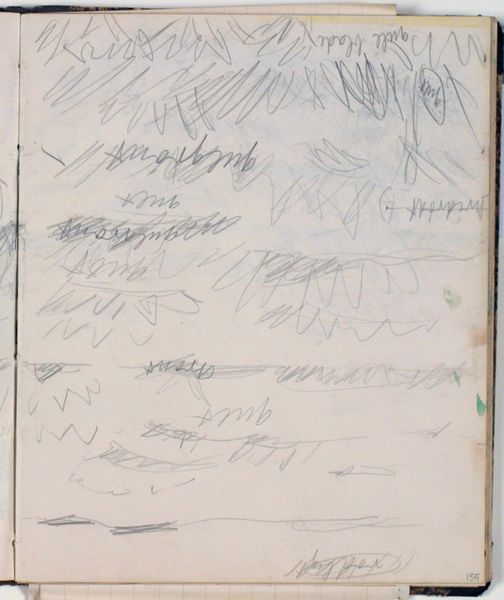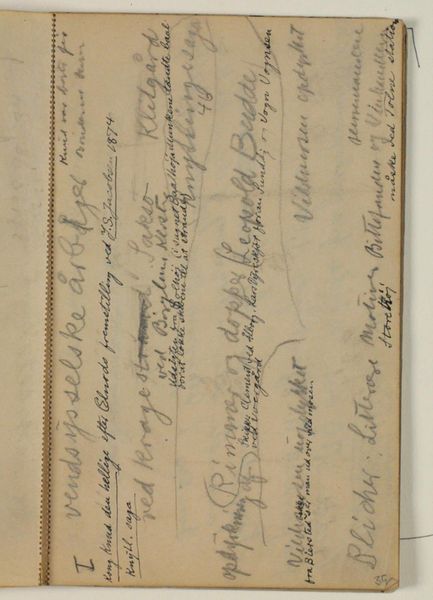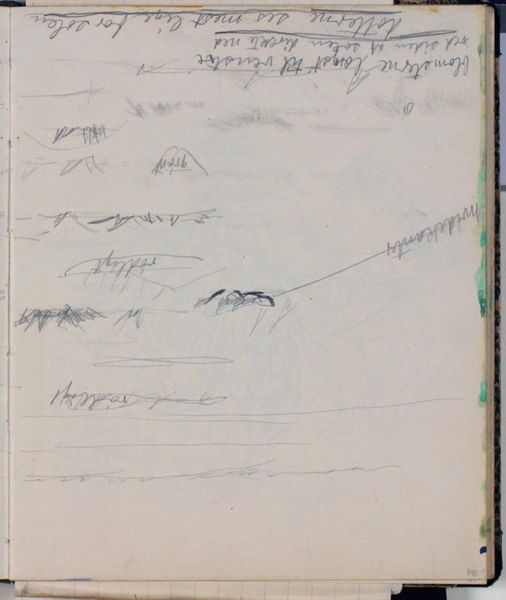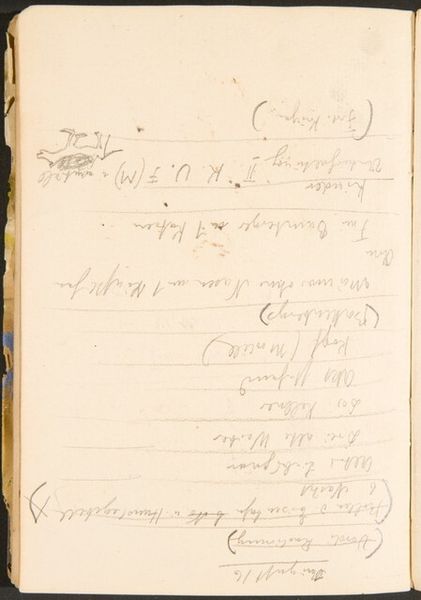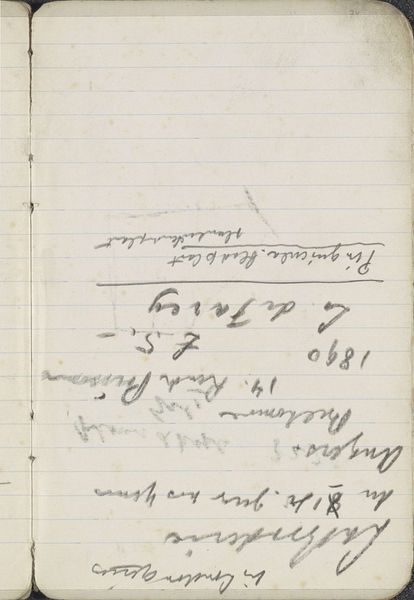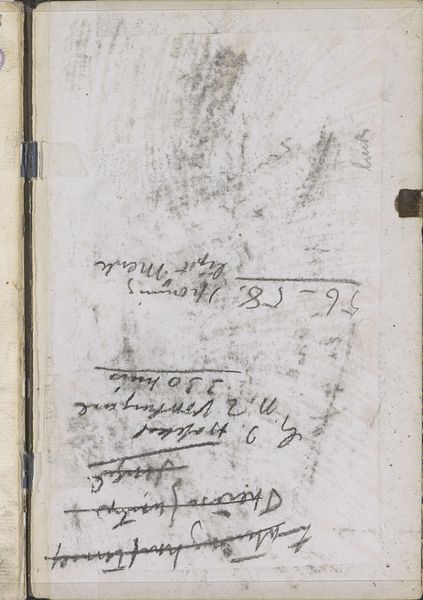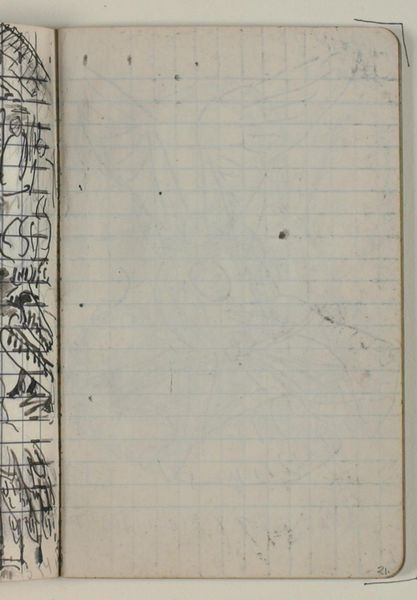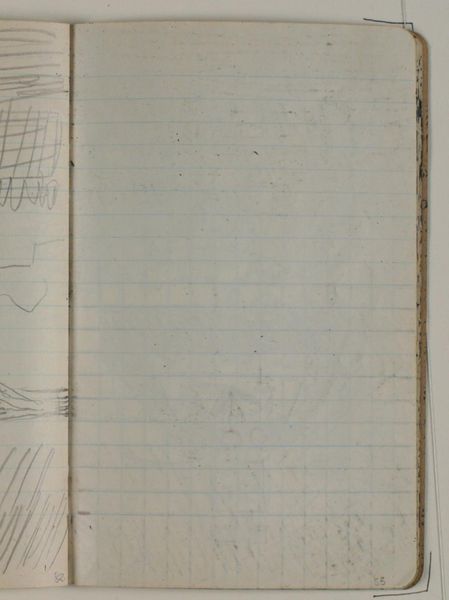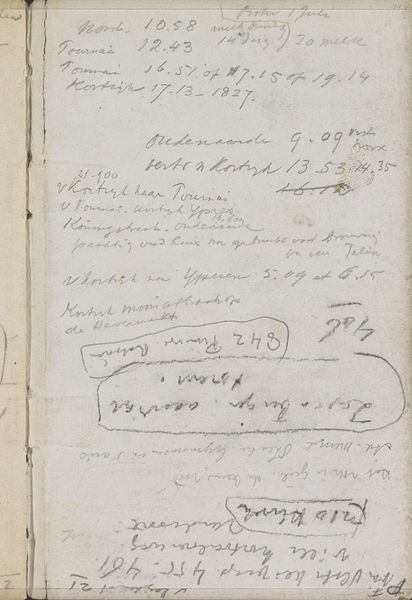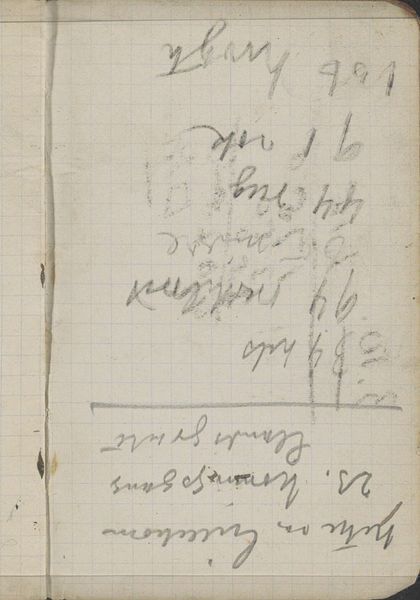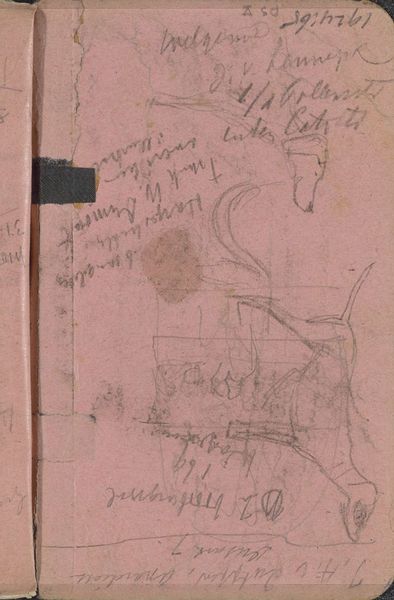
Landskabsstudie. Notater og farveangivelser 1930 - 1936
drawing, paper, pencil, graphite
drawing
landscape
paper
coloured pencil
pencil
graphite
modernism
Dimensions: 226 mm (height) x 185 mm (width) x 112 mm (depth) (monteringsmaal), 221 mm (height) x 184 mm (width) (bladmaal)
Curator: Here we have "Landskabsstudie. Notater og farveangivelser," or "Landscape study. Notes and color indications" by Niels Larsen Stevns, dating from 1930 to 1936. The work utilizes pencil, graphite, and colored pencil on paper. Editor: It strikes me as rather tentative, more like a collection of observations than a finished work. The gray scribbles feel almost restless. Curator: Restless is an apt descriptor. Note how Stevns captures the landscape. Consider his marks - the short, repeated lines that evoke texture, a sense of the real topography abstracted into pure form. We could see each line as its own signifying element contributing to a landscape of fragmented impressions. Editor: It is all about impressions isn't it? I'm thinking of the artist out in the field, sketchbook in hand, quickly capturing these color and tonal shifts. You can practically feel the immediacy of the act, the raw materiality of the pencils on paper. Was this part of a larger project perhaps? I can see how the artist is challenging boundaries of observation in favor of documenting lived moments. Curator: Precisely. The arrangement on the page invites us to follow his eye and method; consider, also, that landscape painting as a genre becomes about process over pictorial recreation. I might venture to add that it makes me consider semiotics in connection to phenomenology. We observe a drawing capturing not just landscape but lived moments, while at the same time presenting landscape only as sets of signs—of color, shadow, perspective—that allow it to be "read". Editor: That tension between observation and lived experience is tangible in his process, which foregrounds how artworks are created through distinct techniques and procedures rather than purely as an idea manifested onto a plane. The raw, somewhat crude lines point directly to labor. Curator: Absolutely. A very rich study in form, technique, and representation of landscape overall, don't you agree? Editor: Indeed, it gets one thinking about what labor and processes bring to image-making.
Comments
No comments
Be the first to comment and join the conversation on the ultimate creative platform.
